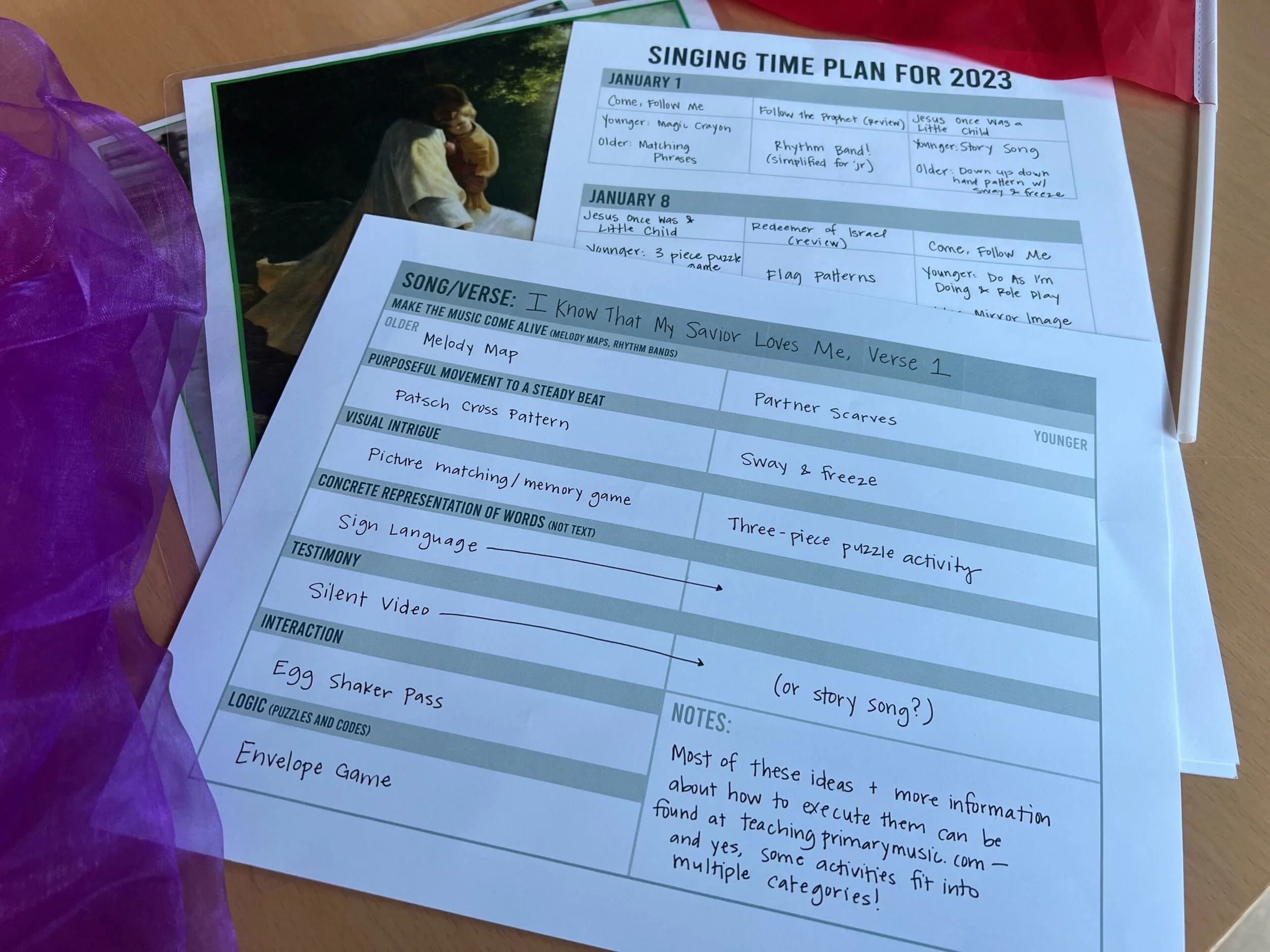Song Experience Planner and Singing Time Planner for 2023
In a bonus podcast episode titled “Planning Activities for the Year”, we discuss what you need to know in order to teach a song and how to create a plan to make that “magic” happen. You can listen to that podcast episode by clicking on the link at the end of this post. Or, keep reading for a quick recap!
We have created two separate worksheets that are meant for your support - if you find them helpful, then that’s why we made them - and if you don’t, these are just toppings on ice cream. Sprinkles, if you will - here for you if you like them, but certainly not necessary.
The Song Experience Worksheet
It takes multiple experiences, over time (with sleeping in between!) for children to learn a song. We recommend four weeks of unique experiences in a row, followed by a “review” activity (or yet another experience that will give them an additional “hook”, grin), every several weeks.
You can use the Song Experience Worksheet to plan out activities for each verse of each song. (I recommend teaching one verse, waiting several weeks, and then introducing the 2nd verse separately - even though the verses have the same melody, it fits differently in their brain, and this separation helps them keep the verses separate in their heads).
There are five types of activities for older AND younger children, and then two additional types of activities you may choose to plan for older children, whose brains have developed a little more.
For both (followed by just a FEW of the many applicable ideas)-
Make the Music Come Alive - this includes melody maps, rhythm bands, or anything that makes the children feel like they can see & feel the music
Purposeful Movement to a Steady Beat - Rhythm sticks! Wind wands! Egg shakers! Paper cups! Clap Patterns! The list goes on….
Visual Intrigue - Picture Matching Games, Puzzle Activities, Putting Pictures in Order, “What’s Missing from this image?” and for younger children, magic crayon
Concrete Representation of Words (not text) - Sign language or meaningful actions, images that symbolize something (i.e. heart for love), colors that represent words or sounds
Testimony - This should really be part of every activity, but activities in this category are things that you feel really help the children feel the spirit of the message. Two strong ideas for this category are silent video or story song.
For older children:
Interaction - Activities that encourage children to work together, such as the egg shaker pass, envelope game, eraser pass, partner rhythms
Logic - Codes or puzzles that need to be deciphered
The 2023 Singing Time Plan Once you’ve completed a worksheet for each verse of each song you would like to introduce, you are ready for the 2023 Singing Time Planner. At this point, putting together a plan feels a lot more like piecing together a puzzle. There are just a few things to remember as you fill in your songs for the year –
Plan on introducing each verse for four weeks in a row.
Stagger the Introduction of New Songs – Try not to teach more than one brand new song a week (though sometimes it may be necessary); the brain craves variety, but needs repetition. Our brains love to explore, but need to come home to the familiar
Don’t forget to plan review activities throughout the year – I don’t necessarily mean a Sunday where you plan a game to see how well everyone remembers all 8 songs you’ve introduced, but rather, four weeks after you’ve finished teaching a song, throw it into your song mix again and do another activity with it – or even the same activity, but with a different manipulative, perhaps. Their brain automatically thinks, “Oh! This song is important! I need to remember it!” – and by throwing in so-called “review” songs on a regular basis, you will be amazed at how well they remember everything in the fall when it is time to prepare for the primary program.
As you plan each Sunday, remember that Contrast is Key. In order for our brain to create hooks – we need moments of change to help things stand out better. Each week’s songs should have a different feel – for example, you could teach something soft and flowy, such as “I love to See the Temple”, and contrast it with something with a strong beat song, like “I Belong to the Church of Jesus Christ,” and then contrast that with yet another flowy song. The activities each week should also contrast with each other – for example, I would strongly advise against teaching three different songs but using rhythm sticks for all three.
It can take a little bit of finagaling to make it all fit together. I usually plan out the first six months of the year and then re-evealuate where we are in June. And I don’t necessarily try to hammer out every single detail of what I am going to do all year long – but I do generally have a good idea of what my resources are and what kinds of activities I am looking for to fill in any gaps. It can take a little bit of shuffling to make it all fit together - but being prepared and having multiple experiences planned for each song and each week will help set your kids up to be successful, so it pays in great dividends!
Hope this helps!
- Courtney
To hear a podcast about this topic, listen HERE

